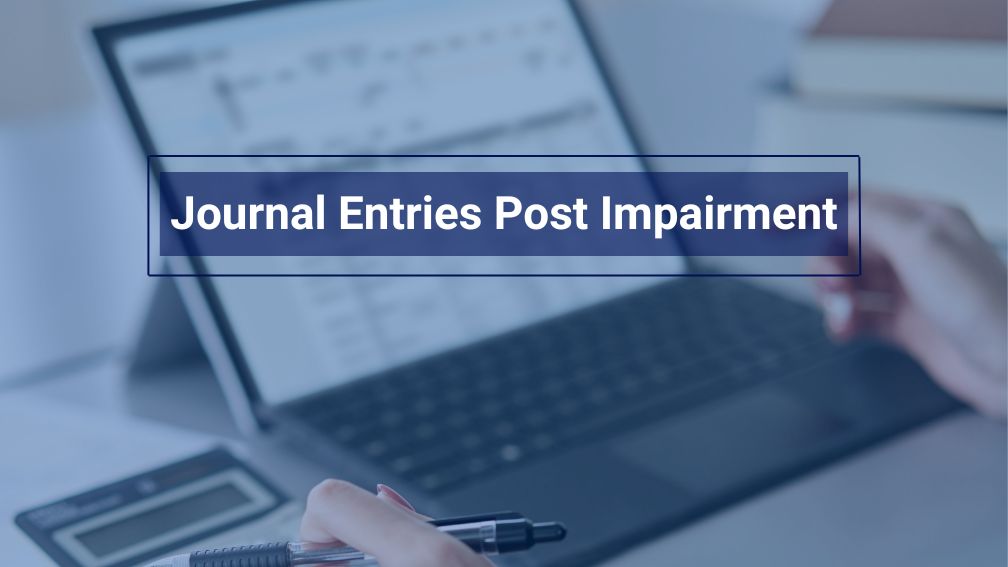Deconstructing your Journal Entries post Impairment
Last Updated on March 1, 2024 by Morgan Beard
Journal entries are a key component of lease accounting under ASC 842. They are used to record the various transactions and adjustments required by the new lease standard.
Some common journal entries for leases under ASC 842 include:
- Initial recognition of the right-of-use asset and lease liability
- Monthly lease cost recognition by debiting expense and crediting the lease liability
- Variable lease cost recognition by debiting expense and crediting cash
- Interest accretion on the lease liability
- Impairment of the right-of-use asset
- Gain/loss on lease modifications
- Gain/loss on lease terminations
Journal entries move the lease transactions through the accounting system and allow the company to properly reflect the lease on their financial statements in compliance with ASC 842.
Understanding Impairment in Lease Accounting
Impairment of a right-of-use asset occurs when its carrying amount exceeds its recoverable amount. This means the asset’s value on the books is higher than the undiscounted future cash flows expected from the asset. Impairment may occur due to obsolescence, physical damage, or changes in the market environment. Companies need to regularly review their ROU assets for impairment indicators and record any necessary impairment charges.
Deconstructing your Journal Entries for Impaired Leases
When a right-of-use asset becomes impaired, the accounting treatment changes going forward. It’s important to understand how to adjust the journal entries appropriately after an impairment.
The impairment loss reduces the carrying value of the ROU asset to its fair value on the books. However, the lease liability remains unchanged, as the contractual payment obligations are still intact.
After an impairment, the ROU asset amortization pattern effectively switches from straight-line to resemble a finance lease, even for operating leases. This accelerated amortization matches the remaining contractual lease payments to the reduced asset carrying value over the remaining term.
The revised amortization expense impacts the periodic lease cost debits. Interest accretion on the liability continues based on the unchanged original discount rate and term. Accurately recalculating the journal entries is critical to reflect the economics of the impaired lease.
Journal Entry Examples: Impairment Scenarios
Similar to other long lived assets, companies are required to assess their ROU Assets for impairment at least annually. If you are trying to figure out if you may have an impairment, refer to our article impairments of ROU Asset to help make that determination.
After you’ve determined an impairment exists, what’s next for your journal entries?
The first step is to record the impairment for the amount that would bring the carrying amount to equal the fair value.
Dr: Impairment Loss
Cr: Right of Use Asset
Despite your impairment of the asset, the lease liability account would not be impacted as the duty to pay remains intact.
After the impairment entry, the ROU Asset has declined. As a result, the ongoing monthly journal entries are impacted.
The updated ROU Asset will reduce the asset ratably over the remaining life of the lease, similar to a finance lease. That’s right, even if it is an operating lease, it will be treated similar to a finance lease!
Assuming the post impairment balance is 50,000 and the remaining lease term is 24 months, the monthly asset reduction will be:
50,000 / 24 = $2,083.33
The monthly lease cost will be the liability accretion/interest expense + $2,083.33. Assuming the liability accretion/interest expense is $350 for the month, with a $5,000 cash payment the journal entries would be:
Operating Journal Entries:
Dr: Lease Cost $2,433.33
Cr: ROU Asset $2,083.33
Cr: Current Liability $350
Dr: Current Liability $5,000
Cr: Cash $5,000
Finance Journal Entries:
Dr: ROU Asset Amortization $2,083.33
Cr: ROU Asset Accumulated Amortization $2,083.33
Dr: Interest Expense $350
Dr: Current Liability $4,650
Cr: Cash $5,000
At the end of the lease term, the ROU Asset balance should be $0.
Journal Entry Impairment Best Practices
When recording lease impairment, be sure to check your lease classification and remaining term to properly calculate the new ROU asset amortization. Consult the original lease agreement if needed to verify terms. Also reassess the discount rate and ensure proper interest/accretion is recorded going forward. Document the impairment analysis and retain supporting schedules for the lease audit trail.
